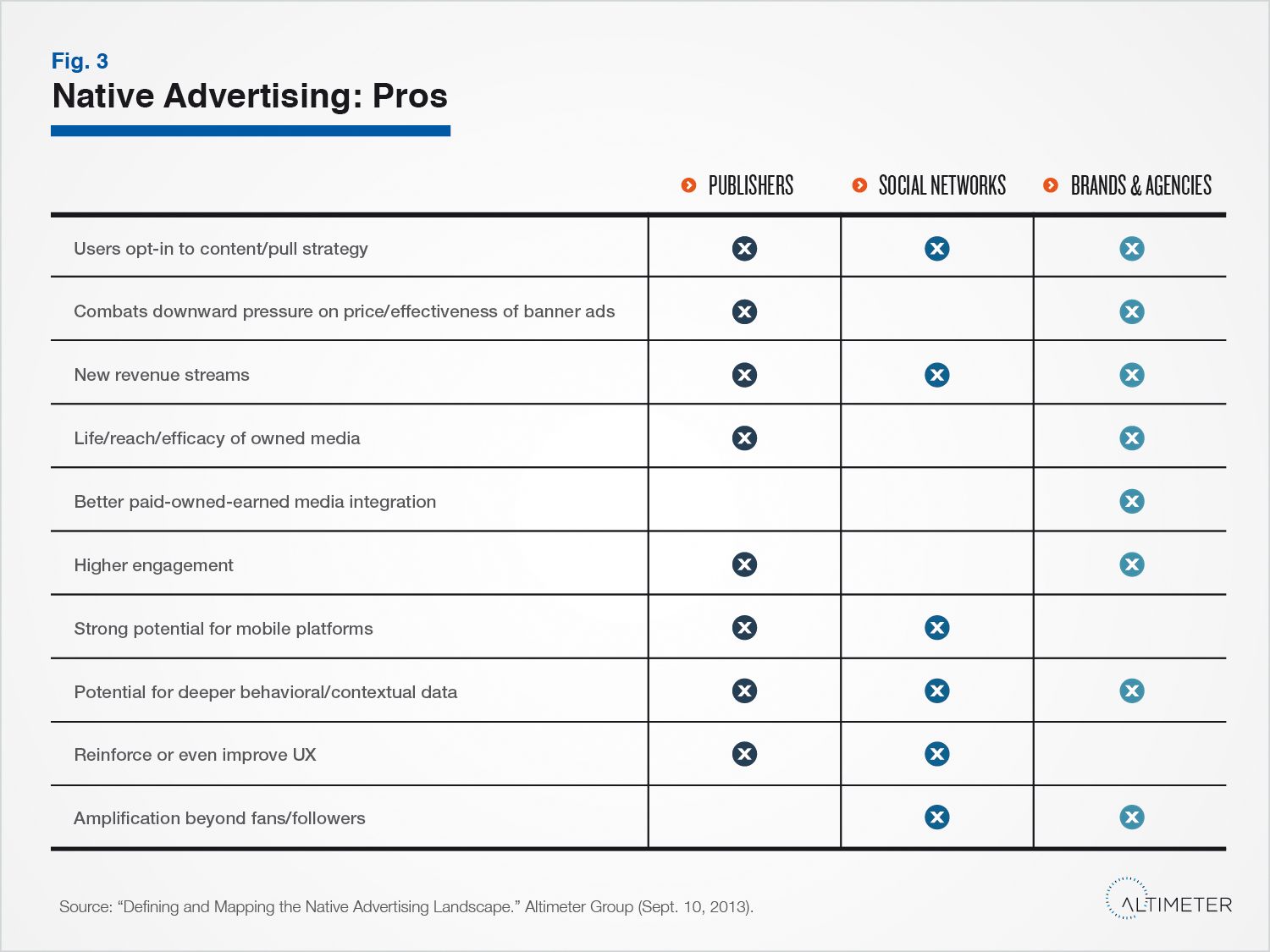
Not since the legislative debate over spam back in the early part of the millennium has a digital marketing term been so riddled by obfuscation and misunderstanding as native advertising.
A quick search of the term on Google returns an impressive 219 million results, yet to date there’s been no real definition of what marketers, publishers, agencies, social media platforms, or any other players in the digital ecosystem mean when they bandy it about.
With so much discussion centered around native advertising, we felt it critical to define the term, assess the nascent landscape, and evaluate the advantages and disadvantages of this new-ish form of advertising. That is what we have done in research published today.
Based on over two dozen interviews with publishers, social networks, brands, agencies, vendors and industry experts, Altimeter Group has arrived at the following definition of native advertising:
Native advertising is a form of converged media that combines paid and owned media into a form of commercial messaging that is fully integrated into, and often unique to, a specific delivery platform.
In other words, we believe native advertising lives at the intersection of paid and owned media, and is therefore a form of converged media. ‘Owned’ media is content that the brand or advertiser controls. Paid media is advertising: space or time that entails a media buy.
Does native advertising overlap with established forms of sponsored/branded/custom content? Advertorial? Indeed it does. Often differentiation can entail splitting hairs. Yet the evolution of so many unique platforms and technologies has made forms of advertising truly “native.” A sponsored tweet can be native only to Twitter, for example, just as a promoted Facebook post is native only to that one channel.
Native Advertising: The Pros and Cons
In addition to defining the term, our research looks at how native advertising can benefit the ecosystem players: technology vendors, agencies, social platforms, publishers, and of course, brands and advertisers. Overall, we see opportunities for all players, these being the chief advantages for each player:
For publishers: new forms of premium inventory.
For social platforms: new advertising products.
For brands: new opportunities for attention, engagement, and message syndication.
For agencies: benefits from creative and media opportunities.
For technology: new solutions facilitate and scale both the creative and delivery aspects of native advertising.
The disadvantages? Scale is an issue, and clearly there are (haven’t were been through this before) issues around disclosure and transparency.
As with all Altimeter Group reports, “Defining and Mapping the Native Advertising Landscape” is Open Research. Please feel free to read it, download it and share it.
Tell us what you think.
If you like it, we’ll create more.
Cross-posted from the Altimeter Group blog.

